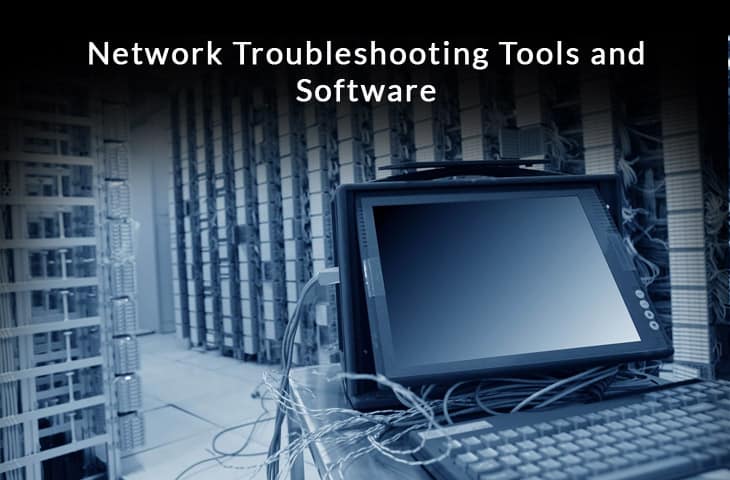
Introduction
Windows operating systems, while generally stable and user-friendly, can still encounter a range of issues. From slow performance to network connectivity problems, understanding how to diagnose and resolve these common problems is crucial. This article will guide you through various Windows troubleshooting tools and methods to keep your system running efficiently.
1. Identifying Performance Issues
a. Task Manager
Task Manager is a fundamental tool for monitoring system performance. It provides insights into CPU, memory, disk, and network usage.
- Accessing Task Manager: Press
Ctrl + Shift + Escor right-click the taskbar and select “Task Manager.” - Analyzing Performance: Navigate to the “Performance” tab to view real-time system resource usage. Identify any resource-heavy applications that might be slowing down your system.
- Ending Tasks: Under the “Processes” tab, you can end tasks that are consuming excessive resources.
b. Resource Monitor
For a more detailed analysis, Resource Monitor breaks down system resource usage by specific processes and services.
- Accessing Resource Monitor: Open Task Manager, go to the “Performance” tab, and click “Open Resource Monitor” at the bottom.
- Detailed Insights: Use Resource Monitor to get a granular view of CPU, memory, disk, and network usage. Look for processes that may be causing bottlenecks.
2. Diagnosing Network Issues
a. Network Troubleshooter
Windows includes built-in troubleshooters that can automatically detect and fix common network problems.
- Running the Network Troubleshooter: Go to
Settings > Update & Security > Troubleshoot > Additional troubleshooters, then select “Internet Connections” and click “Run the troubleshooter.”
b. Command Line Tools
Command line tools can provide deeper insights into network issues.
- Ping: Use
pingto test connectivity to a specific IP address or domain. For example,ping google.comchecks if you can reach Google’s servers. - ipconfig: Running
ipconfig /alldisplays detailed information about your network configuration.ipconfig /releaseandipconfig /renewcan reset your IP address, which might resolve connectivity issues. - tracert: Use
tracertfollowed by a domain to trace the path packets take to reach that domain. This can help identify where delays or failures occur in the network path.
3. Fixing Software and Driver Issues
a. Windows Update
Keeping your system and drivers up-to-date is essential for stability and performance.
- Checking for Updates: Go to
Settings > Update & Security > Windows Updateand click “Check for updates.” - Driver Updates: Ensure your device drivers are current. Windows Update can automatically download and install the latest drivers for your hardware.
b. Device Manager
Device Manager helps manage and troubleshoot hardware devices.
- Accessing Device Manager: Right-click the Start button and select “Device Manager.”
- Updating Drivers: Find the device you want to update, right-click it, and select “Update driver.” Choose “Search automatically for updated driver software.”
4. Managing Startup Programs
a. Task Manager Startup Tab
Too many startup programs can slow down boot times.
- Managing Startup Programs: Open Task Manager, go to the “Startup” tab, and disable unnecessary startup programs. Right-click on a program and select “Disable.”
b. MSConfig
System Configuration (MSConfig) provides advanced options for managing startup processes.
- Accessing MSConfig: Press
Win + R, typemsconfig, and press Enter. - Modifying Startup Items: Under the “Startup” tab, click “Open Task Manager.” Disable or enable startup items as needed.
5. Using Built-in Troubleshooters
Windows 10 and 11 come with a variety of troubleshooters designed to automatically detect and fix issues.
- Accessing Troubleshooters: Go to
Settings > Update & Security > Troubleshoot > Additional troubleshooters. - Common Troubleshooters: Use troubleshooters for problems related to Bluetooth, audio, printer, Windows Update, and more.
6. System File Checker (SFC) and DISM
a. System File Checker (SFC)
SFC scans for and repairs corrupted system files.
- Running SFC: Open Command Prompt as an administrator and type
sfc /scannow. This process may take some time and requires a restart if any issues are found and fixed.
b. Deployment Imaging Service and Management Tool (DISM)
DISM repairs the Windows image, which can resolve deeper issues.
- Running DISM: Open Command Prompt as an administrator and type
DISM /Online /Cleanup-Image /RestoreHealth.
7. Event Viewer
Event Viewer logs system events and errors, which can be invaluable for diagnosing problems.
- Accessing Event Viewer: Press
Win + Xand select “Event Viewer.” - Analyzing Logs: Check logs under “Windows Logs” for System, Application, and Security to identify errors and warnings that might indicate underlying issues.
8. System Restore
System Restore can roll back your system to a previous state, potentially resolving recent issues.
- Creating a Restore Point: Go to
Control Panel > System and Security > System > System Protection > Create. - Restoring to a Previous Point: In the same menu, click “System Restore” and follow the prompts to restore your system to an earlier point in time.
9. Advanced Startup Options
If your system fails to boot properly, Advanced Startup Options can help.
- Accessing Advanced Startup Options: Hold
Shiftwhile clicking “Restart” from the Start menu, or boot from a Windows installation media and select “Repair your computer.” - Using Options: Use options like “Startup Repair,” “Safe Mode,” and “System Restore” to troubleshoot and fix boot issues.
Conclusion
Understanding and utilizing Windows troubleshooting tools can significantly reduce downtime and frustration when dealing with system issues. Regular maintenance and proactive monitoring are key to maintaining a healthy and efficient Windows environment. By following the steps outlined in this guide, you’ll be well-equipped to diagnose and resolve common problems effectively.